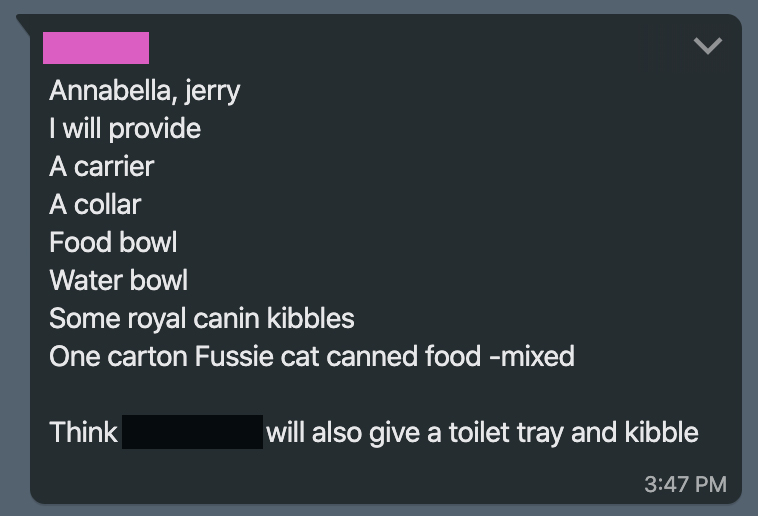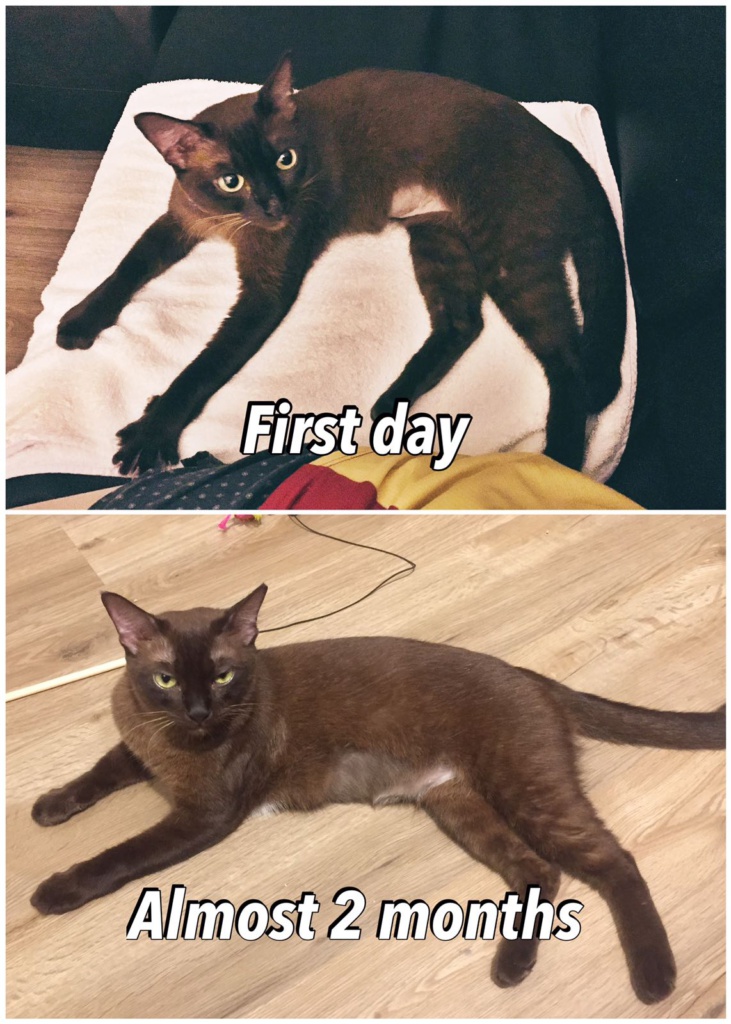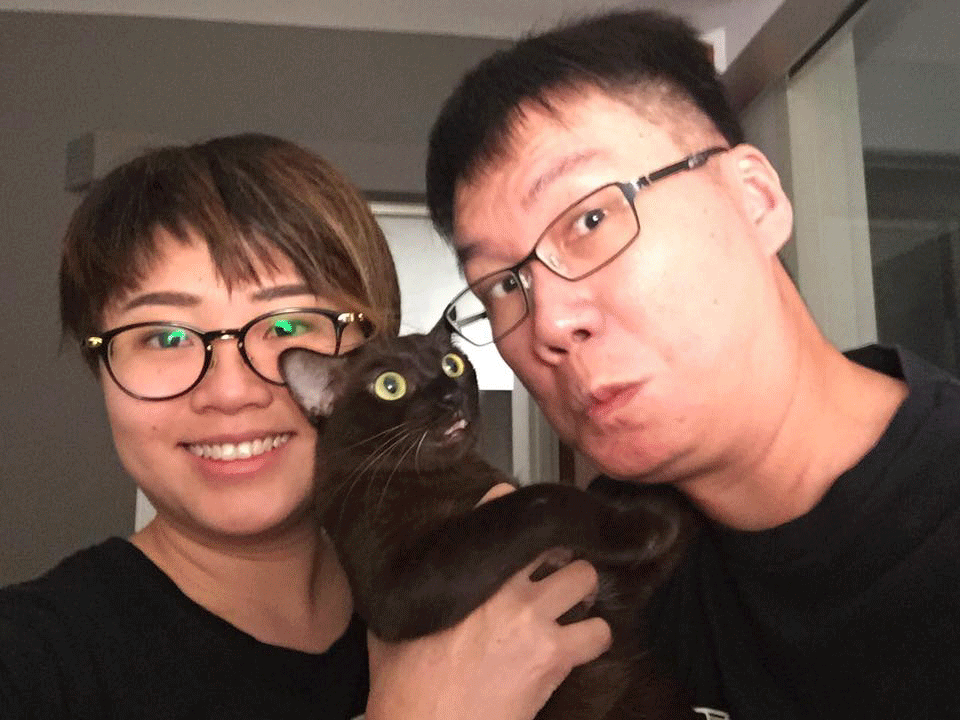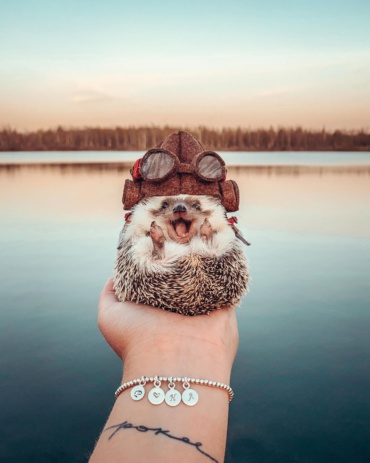I’ve always had a fascination for cats from the time I was little. One of the many cat-related stories of me as a child was how I catnapped several kittens without my dad’s knowledge. We were followed by what seems to be their mother and rightfully so, I had returned them to her.
Fast forward to when I met my then boyfriend (now husband), I found out he had dogs most of his life and loves cats too, naturally we would often fantasize about having pets, and how many fur kids we’d have in our household.

Expectation…
The moment we’ve successfully applied for our HDB flat, and started moving in, plans for pawrenthood slowly began taking shape. Because of his lifelong experience with dogs and family drama of not having everyone on board, he was rather adamant about ensuring I was prepared for a life with pets – as I’ve never lived alongside cats or dogs while growing up.

We were determined to go by the adoption route as we both have strong opinions on that. From following our local Facebook cat groups, we’ve gleaned lots of information and made plans to find a cat at an adoption drive or from a Cat Welfare Society (CWS) or SPCA related event.
From their Facebook pages and friends, we understood that they have rather stringent adoption guidelines about the readiness of your home: especially if your home has been cat-proofed with the necessary window hardware for pet safety in highrise apartments, or houseplants that pose a risk to cats, etc.
We’ve also been concerned about the realities of cost and how we would be involved with the cat’s life. Whether we could give the best to the cat and that we may not be ready for a long time. Day to day costs and medical costs may be borne by the fosterers alone. So on top of time and effort, money is also an important factor in our decision.
…Reality
It was August 2017. After boarding our flight and waiting for the plane to take off, I was thumbing through my Facebook feed when I came across a friend’s social post, looking for somebody to help foster an abandoned cat.
I turned to my husband seated next to me:
“You’ve always wanted a Siamese cat…?”
He had a good look at the pictures, and shrugged, “Well, if it’s just fostering for the time being, why not?”
At that time, we had thought fostering this brown kitty would be a great opportunity to learn about cat ownership, before committing to adopting one. Little did we know, we were wrong in some ways. ?
Once we returned home, I reached out to my friend to offer our help. After being added to a Whatsapp group with a direct line to Brownie’s rescuers, we finally arranged a day for this brown cat to be transported.

The rescuers understood we are first-time cat owners, so they had kindly packed a “starter kit” to help make the transition smooth. The starter kit included a tiny litter box, feeding bowls, about 2 weeks worth of kitten kibble and canned food, some toys and a scratching board.

Before Brownie was put in our care, we read several articles suggesting keeping new cats in one room for a couple days before letting them go about. This was to ensure the cat had enough time to adjust to her new surroundings before showing her the rest of the place. Brownie took off on her own and claimed every conceivable spot for herself in just a couple days. We then decided to purchase extra supplies should her next forever home take some time to happen.
It was then, while shopping for extra supplies, my husband had made up his mind – because he felt it wasn’t fair for Brownie to be bounced from home to home if we were only fostering for a month or slightly more. Also, it happens that he often works from home by himself and boy, does it get lonely.
We were so transparent when asking for deals on pet supplies, the rescuers immediately caught on we were going to keep her long term. Though at that point in time we were still iffy about this big decision, the rescuers know we’ve been caught hook, line and sinker.
A week or two 2 months had passed, and we announced Brownie as our own. She has officially become what among cat circles is dubbed as a “foster fail”.

Day 60: “Kneel before me, lousy peasant”
We also kept her name Brownie, to pay tribute to the rescuers who had christened her as such.
Til this day, we have never regretted having Brownie by our side.

From here on out
I can only write what I know through the experience of other friends who have successfully sent out their foster cats to loving homes.
In a normal fostering situation, the cat moves out of the foster home to their furrever families. The fosterers and rescuers will be communicating regularly to keep each other current on what’s happening.
Before COVID19, adoption drives were often organized, and hopefully we can return to that soon. It is the responsibility of fosterers to ensure the cats are healthy, disease & parasite free and well groomed so they can be put out to furrever homes in the best condition.

If fosterers are inclined and well connected, they could get spots in adoption drives on their own, or they can easily coordinate with rescuers to secure spots for their cats.
The actual adoption process itself may be less straightforward, and dare I say such a process requires the alignment of the stars. Potential adopters may need to be screened, have their living conditions checked and past adoption history reviewed. However that topic is an entire series of articles on its own and I’m sure we can expand more on that in the future.
Once the adopters have been screened and the papers signed, it is time to bid teary goodbyes to your foster cat with whom you’d probably have bonded over the last few weeks or months. But don’t let that stop you from fostering. Fostering is a worthy cause, and it has a positive impact on both the cats, and the communities at large.

ABOUT THE AUTHOR
Anna’s a cat slave to three ex-street cats Brownie, Beth and Boba.
Holla at Brownie and the gang at @brownbethboba on Instagram!































